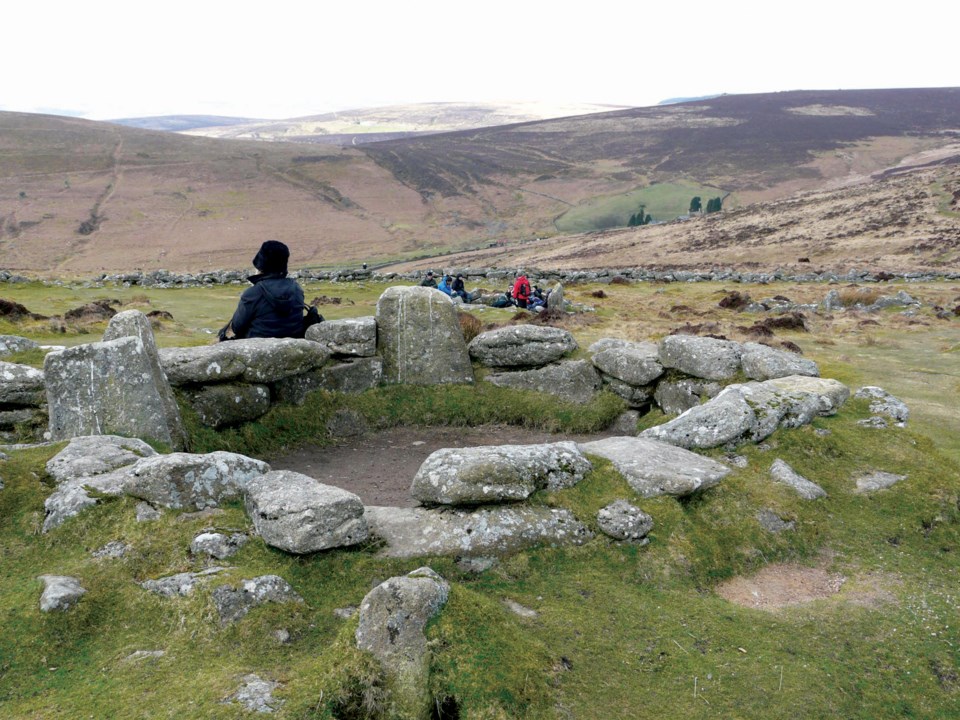“There rose ever, dark against the evening sky, the long, gloomy curve of the moor, broken by jagged and sinister hills.”
So wrote Dr. John Watson in The Hound of the Baskervilles, talking about the bleak landscape of Devon in southwest England. It’s a description that fits perfectly the approach to Grimspound, one of the locations used by Sherlock Holmes’ creator, Sir Arthur Conan Doyle, for Hound.
In Hound, probably the most famous Holmes story, the London consulting detective and his trusted companion, Dr. Watson, leave the cozy warmth of 221B Baker Street and come to Dartmoor, a desolate area of nearly 775 square kilometres of disorienting granite hills and boggy, treacherous mires that can suck a man down to his death.
Grimspound is the site of a Bronze Age hut circle, one of many on the moors, where a few dozen families and their domestic animals lived 3,000 years ago. It’s a particularly well-preserved example, with the stone ruins of 24 huts and a rocky, waist-high wall that still completely encircles the camp, which is why it’s believed to be the one Conan Doyle used in Hound. (It’s in the ruins that Holmes makes his base, to observe the goings-on of various characters.)
You might think that, since Grimspound is in Dartmoor National Park, the way to it would be well signposted. It isn’t. “We’re very informal,” says Jonathan Stones, a park ranger. “We don’t do big trail markers.”
Park rangers do offer several tours, some including Grimspound, but if you were looking for it on your own you’d need to drive northeast from Princetown along B3212, turn south onto Challacombe Road and look for five worn granite steps on the left of the road. Drive slowly or you’ll miss them.
From the steps, a narrow path winds uphill, crossing a burbling brook and passing a few of the moor’s wild ponies. The hut circle is about a 10-minute climb from the road. You may meet the odd hiker; more likely, you and the wind will have the site to yourselves.
Conan Doyle took liberties with the moor’s geography when writing his novel. Grimspound really ought to be next to Fox Tor, south of Princetown. In the book, Fox Tor is where the escaped convict, Selden, hides. Conan Doyle says there’s a deadly bog between the tor and Baskerville Hall and this accords with reality, but where the grand house should sit is the less-impressive Whiteworks Cottages.
If you want to see the model for Baskerville Hall – and the origin of the legend Conan Doyle based Hound on – ask for directions at the park office in Princetown. It’s in a valley near Holne and it’s called Brook Manor. (It’s still lived in, so can only be viewed from the road.) There, in the 1600s, dwelt Richard Cabell, reputed to have sold his soul to the devil. When he died, a phantom pack of wild dogs is said to have gathered at his tomb and howled, their shrieks carrying across the dark and lonely moor.
For more information on Dartmoor, go to the Visit Dartmoor website at www.visitdartmoor.co.uk
For information on travel in Britain, see Visit Britain’s website at www.visitbritain.com
More stories at www.culturelocker.com



